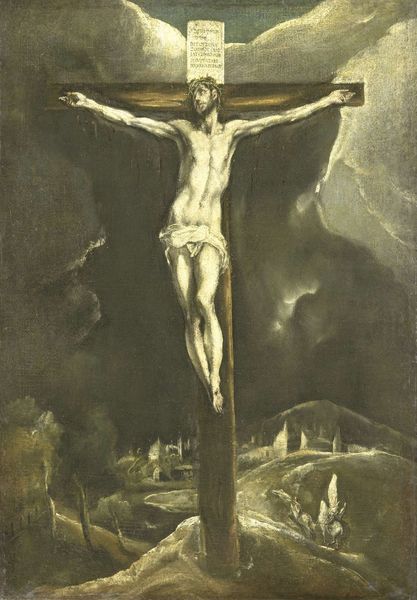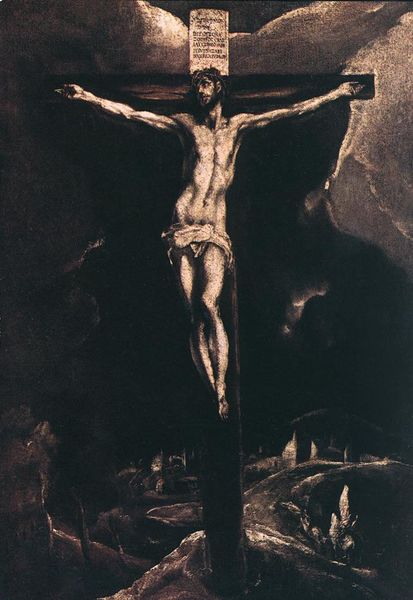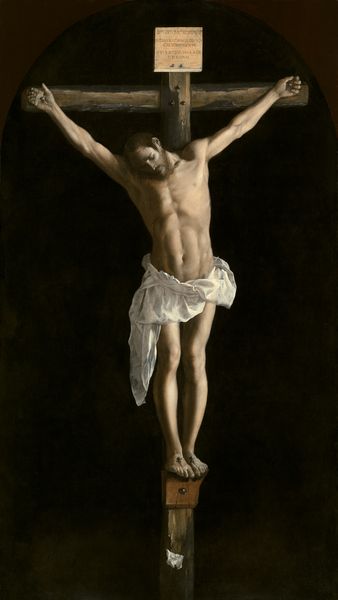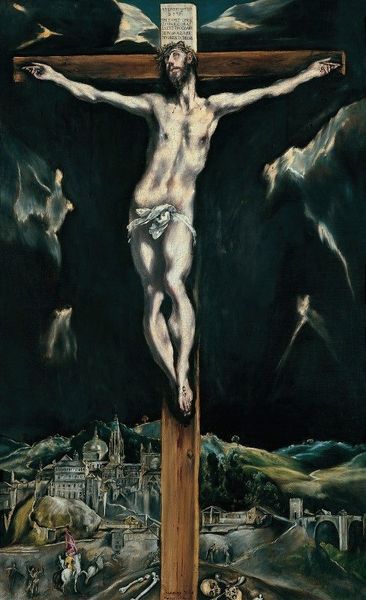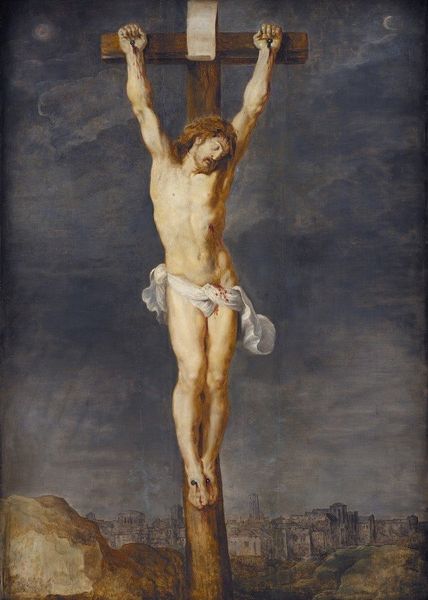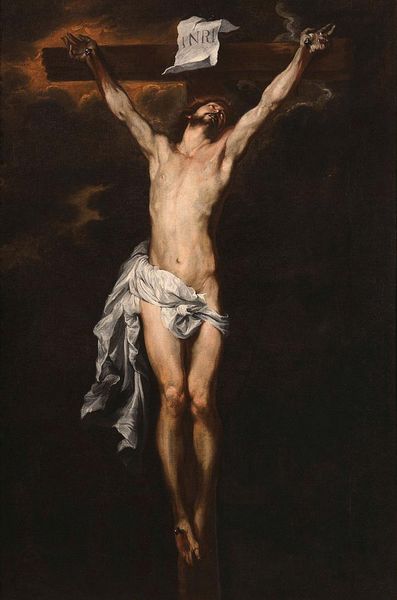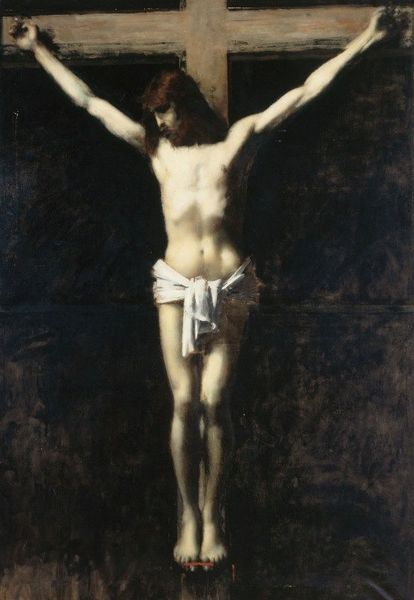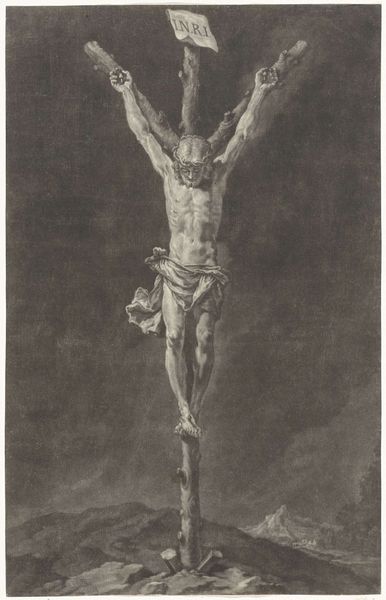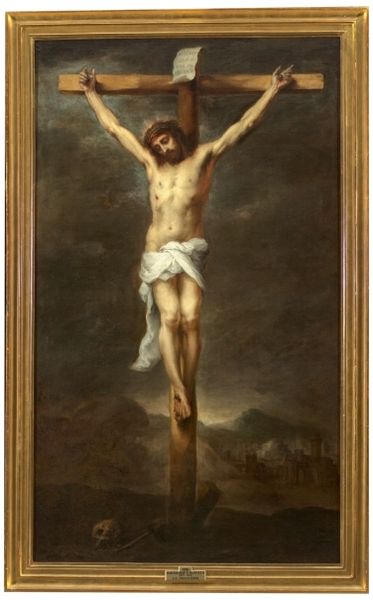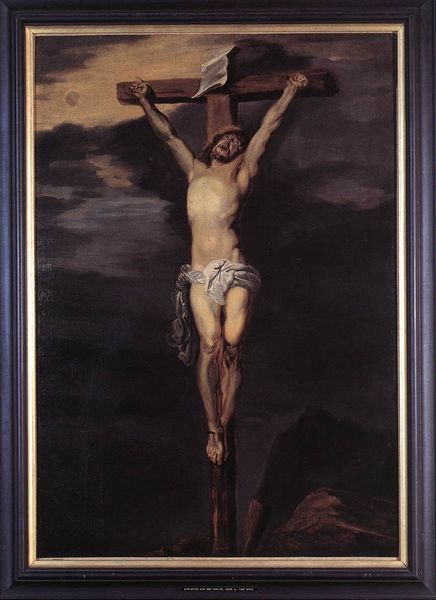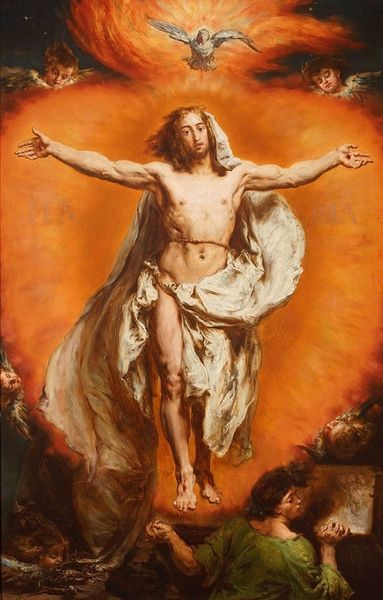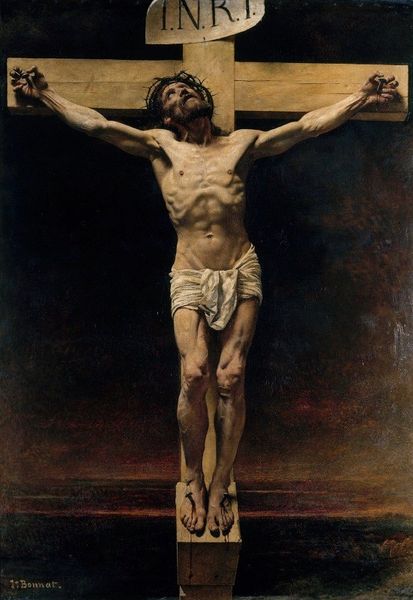
painting, oil-paint
#
portrait
#
painting
#
oil-paint
#
mannerism
#
oil painting
#
underpainting
#
painting painterly
#
history-painting
#
italian-renaissance
#
nude
#
portrait art
Copyright: Public Domain: Artvee
Curator: Here we have El Greco’s "Christ on the Cross," likely painted between 1600 and 1610. It's a powerful work in oil paint, demonstrating the artist's characteristic Mannerist style. Editor: It just throws you right into it, doesn't it? The darkness behind the figure… almost overwhelming. A kind of swirling emotional maelstrom. Curator: Indeed. Note how El Greco uses elongated forms and the unnatural lighting. His approach breaks with High Renaissance ideals of balanced proportion. Look specifically at the contortions of the torso, the pronounced musculature. Editor: And the cloudscape feels almost alive, mirroring the turmoil. There's this strange mix of vulnerability and power radiating from the Christ figure himself. It's fascinating, how El Greco captured that paradox. Is it me, or can we also see elements anticipating expressionism centuries later? Curator: It's certainly possible to draw connections across different artistic movements. It would not be unfounded given how El Greco eschewed traditional academic approaches in favor of something deeply expressive. Editor: I get the feeling the figure wasn’t idealized at all. There's this raw physicality—the ribs showing, the strained muscles—a stark reminder of human suffering. It's not about beauty, but about brutal honesty, maybe? Curator: I agree; it is very tactile. Note that The composition drives the eye upward. The stark white loincloth against the darkness creates a strong visual contrast, furthering the drama of the image, the tension between earth and heaven perhaps? Editor: Looking at it, I am stuck between the historical, almost distant narrative and a feeling of utter immediacy, like witnessing something truly raw and terrible, as if history itself is bleeding into now. Curator: A valid interpretation, one that speaks to the enduring power of El Greco’s unconventional formal strategies, as much psychological as pictorial. Editor: It makes you think about not only death, but its implications beyond just what you see with the naked eye; I'd say there is more here than what we see initially, for sure. Curator: A stimulating analysis. I, too, find new appreciation for its compositional daring after looking together here today.
Comments
No comments
Be the first to comment and join the conversation on the ultimate creative platform.
